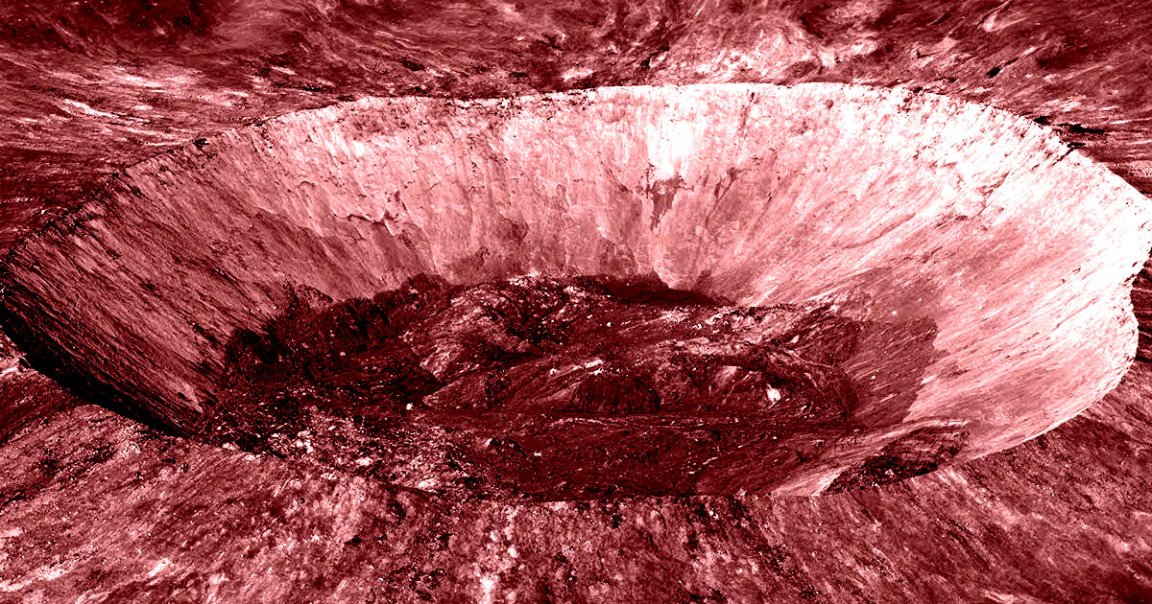
A team of astronomers believes the near-Earth asteroid Kamo’oalewa, a space rock between 130 and 328 feet in diameter, was once part of the Moon.
More specifically, a research team led by Tsinghua University astronomer Yifei Jiao suggests the rock was gouged from a geological feature on the far side of the Moon called the Giordano Bruno crater, named after a 16th-century Italian cosmological theorist.
“We have explored the processes for impact-induced lunar fragments migrating into Earth co-orbital space and presented support for Kamo’oalewa’s possible origin from the formation of the Giordano Bruno crater a few million years ago,” the researchers write in their paper published in the journal Nature Astronomy last week.
“This would directly link a specific asteroid in space to its source crater on the Moon and suggests the existence of more small asteroids composed of lunar material yet to be discovered in near-Earth space,” they added.
The space rock has been an outlier that has fascinated astronomers for years now. For one, it’s orbiting the Sun in an Earth-like orbit, and is expected to remain stable there for millions of years.
Spectrum analysis has also revealed that it matches the composition of the Moon almost perfectly.
“We looked at Kamo’oalewa’s spectrum only because it was in an unusual orbit,” University of Arizona planetary sciences professor Renu Malhotra, coauthor of a different 2023 paper suggesting Kamo’oalewa was a chunk of the Moon, told Astronomy in January. “If it had been a typical near-Earth asteroid, no one would have thought to find its spectrum and we wouldn’t have known Kamo’oalewa could be a lunar fragment.”
Now, Jiao and his colleagues built on that conclusion by using computer models to simulate what would happen if Kamo’oalewa were to impact with the Moon’s surface. They found that it would leave behind a crater larger than 12 miles.
The Giordano crater, which measures a whopping 13.6 miles across, appears to be the perfect candidate.
The lack of debris also suggests that the space rock is anywhere between ten and 100 million years old, relatively young given the Moon itself is billions of years old.
“It is clear that the largest, youngest craters are more probable sources, as they produce more escaping fragments that still remain in space or the Earth co-orbital region,” Jiao and his team wrote, concluding that Giordano Bruno “is the only possible source crater satisfying the criterion.”
While work still has to be done to definitively tie the space rock to the crater, it’s nonetheless a fascinating theory that paints a riveting, albeit brutal, picture of the Moon’s recent history. The research also allows us to better understand near-Earth asteroids like Kamo’oalewa and their origins, possibly leading to future discoveries of similar rocks.
Most excitingly, China is planning to visit Kamo’oalewa as part of its Tianwen-2 asteroid sample return mission, which is tentatively scheduled for next year.
“The possibility of a lunar-derived origin adds unexpected intrigue to the mission and presents additional technical challenges for the sample return,” coauthor and Tsinghua University planetary scientist Bin Cheng told Science.
“We can learn a lot about the crater history of the Moon, and its contribution to Earth’s environment,” he added.
More on near-Earth asteroids: Debris From NASA Smashing Asteroid Could Strike Mars, Scientists Find